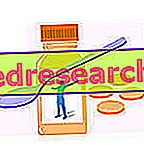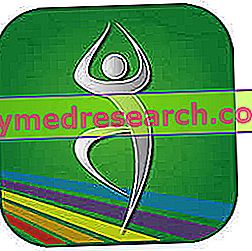
What is Hetlioz -Tasimelteon used for and what is it used for?
Hetlioz is a medicine used in the treatment of altered sleep-wake syndrome ("non-24" syndrome) in blind adults. The non-24 syndrome is a condition that affects almost exclusively blind people, who have a sleep-wake cycle that is not synchronized with day and night, often longer than the normal 24-hour cycle. As a result, patients fall asleep and wake up at unusual times.
Hetlioz contains the active substance tasimelteon.
Because the number of patients with non-24 syndrome is low, the disease is considered "rare" and Hetlioz was designated an "orphan medicine" (a medicine used in rare diseases) on February 23, 2011.
How is Hetlioz -Tasimelteon used?
Hetlioz is available as a capsule (20 mg) and can only be obtained with a prescription.
Hetlioz is indicated for long-term use. The recommended dose is one capsule a day, taken an hour before bedtime, every night at the same time. The medicine should be taken without food.
How does Hetlioz -Tasimelteon work?
A hormone called melatonin plays a key role in coordinating the body's sleep cycle. In people with a normal perception of light and darkness, melatonin is produced in the hours of darkness and promotes sleep by acting on melatonin receptors present in specific brain areas. The active ingredient in Hetlioz, tasimelteon, acts on the same receptors as melatonin to stimulate sleep and regulate its rhythm. If taken every day at an appropriate time, it can help restore a more normal sleep-wake cycle.
What benefit has Hetlioz -Tasimelteon shown during the studies?
Hetlioz has been shown to be effective in helping patients adapt to the normal 24-hour sleep rhythm in 2 main studies.
the first study, involving a total of 84 blind patients with non-24 syndrome, compared Hetlioz with a placebo (a dummy treatment). The main measure of effectiveness was the percentage of patients able to adapt to the 24-hour wake-sleep rhythm, calculated by observing changes in melatonin metabolism in patients' urine over time. 20% of patients treated with Hetlioz (8 out of 40) were able to adapt to the 24-hour wake-sleep rhythm after 1 month of therapy compared to approximately 3% of patients treated with placebo (1 of 38). Better results were observed in a subset of patients after 7 months of treatment, which suggests that patients may need weeks or months to respond to therapy.
In the second study, 57 patients were initially treated with Hetlioz for about 11 weeks. Patients who were able to adapt to the 24-hour wake-sleep rhythm (20 in total) were subsequently treated with Hetlioz or placebo for another 8 weeks, to see if Hetlioz's effect was maintained over time. Of the 10 patients who continued to receive the medicine, at the end of the study 9 people had maintained the normal 24-hour wake-sleep rhythm compared to 2 of the 10 placebo-treated patients.
What is the risk associated with Hetlioz -Tasimelteon?
The most common side effects of Hetlioz (which may affect more than 3 in 100 people) are headache, drowsiness, nausea and dizziness. These effects are generally mild or moderate and of a transitory nature.
For the full list of all side effects and restrictions with Hetlioz, see the package leaflet.
Why was Hetlioz -Tasimelteon approved?
The Agency's Committee for Medicinal Products for Human Use (CHMP) decided that Hetlioz's benefits are greater than its risks and recommended that it be approved for use in the EU. The CHMP noted that only about 20% of patients would be able to benefit from the Hetlioz treatment. However, given the absence of approved therapies for non-24 syndrome, which is a debilitating condition, this response, although modest, was considered important. However, prolonged treatment is necessary to maintain the beneficial effects of the medicine. As for safety, Hetlioz has been shown to be well tolerated, causing only a few mild side effects.
What measures are being taken to ensure the safe and effective use of Hetlioz -Tasimelteon?
A risk management plan has been developed to ensure that Hetlioz is used as safely as possible. Based on this plan, safety information has been included in the summary of product characteristics and the package leaflet for Hetlioz, including the appropriate precautions to be followed by healthcare professionals and patients.
More information on Hetlioz -Tasimelteon
On 3 July 2015, the European Commission issued a marketing authorization for Hetlioz, valid throughout the European Union.
For more information about treatment with Hetlioz, read the package leaflet (also part of the EPAR) or contact your doctor or pharmacist.
Last update of this summary: 07-2015.



